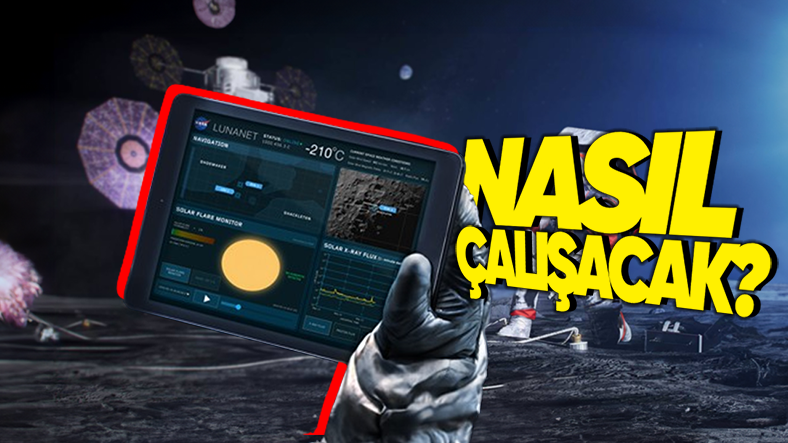For trips to the moon and activities carried out there an advanced communications network is necessary.
NASA, By meeting this need with LunaNet It aims to start a new era on the moon!
First, let’s take a look at what LunaNet is and how it works.

LunaNet, for activities on the moon using innovative network technologies and standards communication and navigation architecture. This architecture, developed by NASA’s SCaN program, will enable exploration of a larger surface area on the moon.
LunaNet will provide a flexible framework within which industry, academia and international partners can collaborate and build their own LunaNet nodes. These nodes will provide four main services: networking, navigation, detection and information services and radio/optical scientific services.
Is continuous communication possible on the moon?

Traditionally, space missions are used to communicate with Earth on pre-planned connections depends. However, multiple missions to the moon may limit the efficiency of such pre-planned connections.
LunaNet offers users a networking approach similar to the Internet network on Earth. stay continuously connected to a large network and will allow data to be sent without prior scheduling.
LunaNet’s core network framework is delay/disruption tolerant network technology (DTN). It holds. Technology; Despite signal interruptions, data flows uninterrupted through the network and reaches its final destination.
LunaNet can provide highly accurate and autonomous navigation on the Moon.

This architecture orbit determination of missions and could enable independent navigation on the Moon’s surface or in Earth orbit by providing access to key measurements necessary for the operation of the guidance system.
LunaNet’s detection and information services provide users can provide warnings and other critical information. These services will significantly enhance the situational awareness of astronauts, rovers, and other surface assets.
For example, LunaNet detects potentially dangerous solar activity. Use of space weather tools sends alerts directly to users. These alerts work in the same way as the weather alerts we receive on our smartphones.
LunaNet will also provide search and rescue capabilities on the Moon.

LunaSAR is NASA’s developer of terrestrial search and rescue technologies. Search and Rescue Office will benefit from his expertise.
LunaNet’s scientific services provide researchers radio and infrared-optical communication links It provides the ability to perform measurements using This network of nodes will perform frequent measurements that will provide a comprehensive survey of the Moon’s environment over time.
LunaNet antennas can also be used in applications such as radio astronomy and antennas radio waves in deep space It can search for signals from distant celestial bodies by observing.
These skills enable scientists to do this testing new theories and will provide a new platform to advance scientific knowledge.
Source: NASA
Our other content that may interest you:
Follow Webtekno on X and don’t miss the news

















